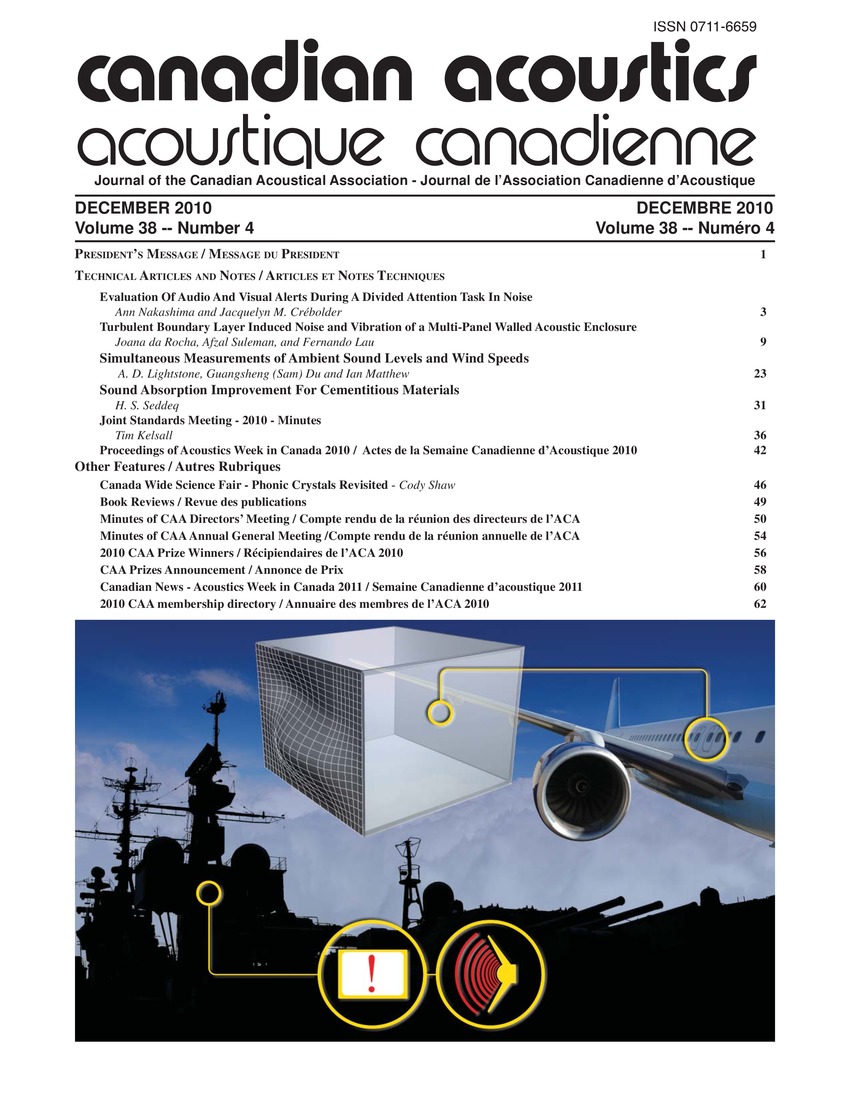Evaluation of audio and visual alerts during a divided attention task in noise
Keywords:
Display devices, Alerting systems, Divided attention, Halifax-class frigates, Main effect, Visual displayAbstract
The Halifax class frigate operations room is a demanding environment in which operators are required to monitor multiple visual displays and auditory communication channels. The current alerting system is ineffective, as the visual alerts tend to be ignored or dismissed without being read, and the auditory alerts are turned off completely. Visual alerting strategies have already been investigated. The current study compared the response times (RT) to visual, auditory and combined (audiovisual) alerts as subjects performed a visual divided attention task using three displays (secondary task). Another objective was to investigate the effects of alert type on the performance of the secondary task. The experiment was performed in quiet and in recorded frigate control room noise (69 dBA). There were no significant differences in RT between the visual and audiovisual alerts in quiet or noise. The RT for the auditory alert was significantly higher than the audiovisual alert in quiet, and than both the visual and audiovisual alerts in noise. There was no main effect of alert type on the performance of the secondary task. The audiovisual alert could be beneficial for detection in the operations room because 1) the RT was not significantly different from the visual alert, indicating that the auditory component was not distracting, and 2) it is more likely to be detected over the visual alert when the operators are looking away from the displays. Future studies should investigate the psychoacoustic properties of the auditory component of the alert for perceived urgency, in the interest of prioritizing the alerts.Additional Files
Published
How to Cite
Issue
Section
License
Author Licensing Addendum
This Licensing Addendum ("Addendum") is entered into between the undersigned Author(s) and Canadian Acoustics journal published by the Canadian Acoustical Association (hereinafter referred to as the "Publisher"). The Author(s) and the Publisher agree as follows:
-
Retained Rights: The Author(s) retain(s) the following rights:
- The right to reproduce, distribute, and publicly display the Work on the Author's personal website or the website of the Author's institution.
- The right to use the Work in the Author's teaching activities and presentations.
- The right to include the Work in a compilation for the Author's personal use, not for sale.
-
Grant of License: The Author(s) grant(s) to the Publisher a worldwide exclusive license to publish, reproduce, distribute, and display the Work in Canadian Acoustics and any other formats and media deemed appropriate by the Publisher.
-
Attribution: The Publisher agrees to include proper attribution to the Author(s) in all publications and reproductions of the Work.
-
No Conflict: This Addendum is intended to be in harmony with, and not in conflict with, the terms and conditions of the original agreement entered into between the Author(s) and the Publisher.
-
Copyright Clause: Copyright on articles is held by the Author(s). The corresponding Author has the right to grant on behalf of all Authors and does grant on behalf of all Authors, a worldwide exclusive license to the Publisher and its licensees in perpetuity, in all forms, formats, and media (whether known now or created in the future), including but not limited to the rights to publish, reproduce, distribute, display, store, translate, create adaptations, reprints, include within collections, and create summaries, extracts, and/or abstracts of the Contribution.


